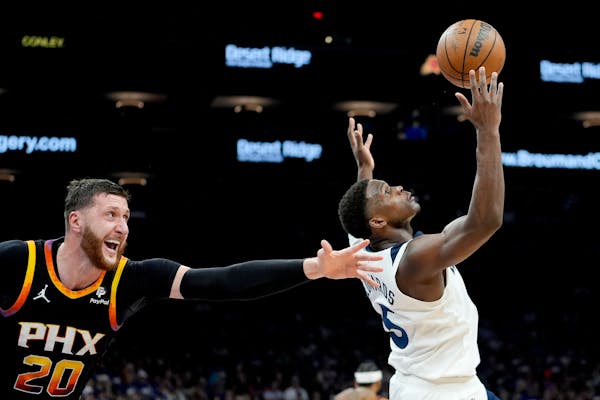Violent crime in Minnesota rose by nearly 22% last year compared with 2020, the Minnesota Bureau of Criminal Apprehension has disclosed in its annual report, while property crimes like burglary showed a slight drop.
The 2021 Uniform Crime Report, released Friday by the BCA, found that aggravated assault saw the biggest year-over-year increase (34%) among the violent crime categories, which also include murder, rape and robbery.
There were 201 homicides in Minnesota last year, up nearly 9% vs. 2020. Nearly half of those killings (97) occurred in Minneapolis. Statewide, homicides resulting in an arrest remained mostly stable at 62% compared to 65% in 2020.
Minnesota agencies reported 30 use of force incidents in 2021, down from 45 in 2020. For the purposes of the report, use of force includes incidents resulting in a fatality, serious injury or when law enforcement shoots at or near a subject.
The report comes amid increasing concern over public safety, which is among leading points of political debate locally, as well as in the race for governor.
On Monday, Minneapolis Mayor Jacob Frey proposed that the city spend more money on police, mental health teams and traffic control agents. Frey's proposal includes covering the costs of four recruit classes aimed at bolstering the Police Department's rank and file by bringing in 160 officers in 2023 and again in 2024.
"Recognizing that we won't get back to full staffing overnight," Frey said in his budget address, "we must do things differently ... specifically in the area of technology. Through strategic investments, we will be able to utilize both our patrol and investigative resources more efficiently to hold perpetrators of violent crimes accountable.
"That's why we gave $1 million in [COVID recovery] funds to MPD to expand both portable cameras and lighting technology. We're doubling down on the technology advancements in this budget. Technology isn't a magic-wand fix, but it certainly is the way of the future. Combine that with mutual aid funding and increased overtime, we can help bridge the gap."
Frey's comments in his speech come after last week's data presented to the City Council show some early signs that the crime wave has crested. Council Member LaTrisha Vetaw attributed progress to police using data to determine where to target resources, but she cautioned, "I feel like I would be jinxing it if I said [crime has] plateaued."
In other areas of violent crime across Minnesota, rapes reported to law enforcement totaled 2,472 in 2021, up 11% compared with the previous year, and there were 3,991 robberies last year, nearly a 3% increase vs. 2020, according to the report.
Standing outside U.S. Bank Stadium in downtown Minneapolis last week with less than three months before Election Day, DFL Gov. Tim Walz, accompanied by a cadre of top state law enforcement leaders, pledged to continue the "surge" of state aid to Minneapolis to fight gun violence, carjackings and other crimes.
His Republican opponent, Scott Jensen, said, "I would ask the question: 'Do you feel safer now than you did three years ago?' We have been extremely clear. We are going to treat this as the crisis that it is."
State Senate Majority Leader Warren Limmer, R-Maple Grove, chimed in, saying that the report "makes it clear: Under the governor's watch, crime is uncontrolled. Senate Republicans stopped all efforts to 'defund the police' and prioritized more resources for law enforcement, increased sentences for repeat violent offenders, and access to a new database to follow the increasing 'soft on crime' decisions of judges and prosecutors. The Democrats opposed all of this and walked away from negotiations at the end of session."
Among the report's other findings:
- Auto theft rose 8.5% from 2020 to 14,829 vehicles stolen last year. That total is the highest the state has seen since 2001.
- In addition, there were 779 carjackings in 2021, the first year specific data were collected. Carjackings are counted separately from auto thefts.
- Officers were assaulted in 900 incidents in 2021, a 35% increase over 2020. In those encounters, 1,112 officers were assaulted. Additionally, one police dog was fatally wounded in the line of duty in 2021.
- Reports of bias motivated incidents increased from 223 in 2020 to 238 last year.
The BCA report also includes data on use of force by officers. In 2020, a state law went on the books that requires law enforcement agencies to disclose their use of force incidents for FBI tabulation. Agencies began providing data on a voluntary basis in 2018, when the FBI first established collection of this category.
Among the 30 encounters reported in 2021, 13 people died, and serious injury occurred in 11 incidents.
The racial makeup of civilians who were the subject of officer use of force: 17 were white, eight Black, two Native American/Alaskan Native, two undetermined and one yet to be confirmed.

In Grand Rapids, Itasca Pride is planning its first event, but there is already pushback
One person shot at YMCA in Coon Rapids

BCA says man pointed pistol-style BB gun at officers before he was shot in Woodbury

Former diversity worker sues University of Minnesota after firing over swastika photo

